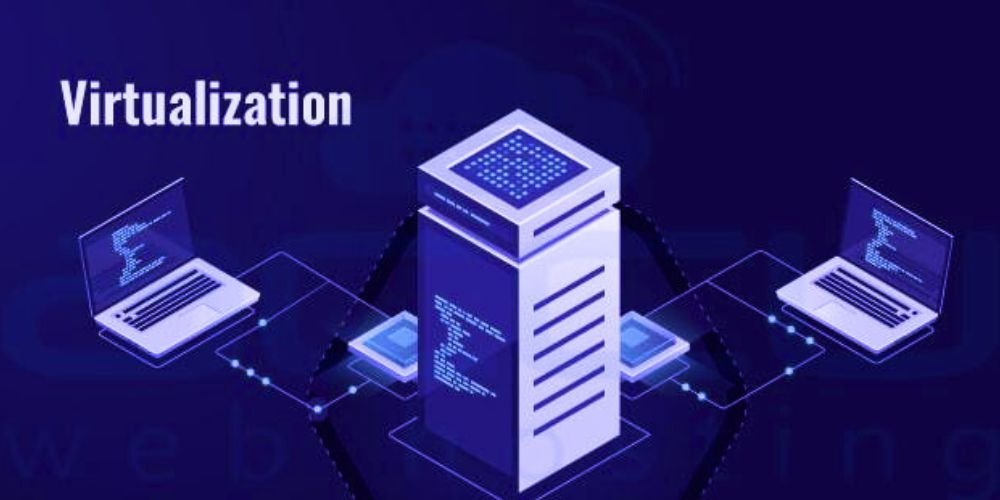Virtualization has emerged as a cornerstone of modern IT infrastructure, transforming how organizations manage, deploy, and scale their computing resources. This comprehensive guide delves into the principles, key components, benefits, and future virtualization trends, highlighting its pivotal role in enhancing efficiency and flexibility in the digital age.
Understanding Virtualization
Virtualization refers to creating virtual versions of physical computing resources, such as servers, storage devices, and networks. This technology allows multiple virtual systems to run on a single physical system, optimizing resource utilization and simplifying management.
Types of Virtualization
There are several types of virtualization, each serving different purposes and offering unique benefits. Server virtualization enables multiple virtual servers to operate on a single physical server, improving efficiency and reducing costs. Storage virtualization abstracts physical storage resources into virtual pools, enhancing flexibility and scalability. Network virtualization creates virtual networks on top of physical networks, improving management and deployment.
Virtualization Technologies
Various technologies underpin virtualization, including hypervisors, virtual machines, and containers. Hypervisors, such as VMware’s ESXi and Microsoft’s Hyper-V, manage the virtual machines (VMs) and allocate resources. Virtual machines emulate physical computers, running operating systems and applications independently. Like those managed by Docker, containers offer lightweight virtualization, isolating applications and their dependencies.
Virtualization vs. Cloud Computing
While virtualization and cloud computing are closely related, they are different. Virtualization is the underlying technology that helps cloud computing by creating virtual environments. Cloud computing leverages virtualization to provide scalable and on-demand resources over the Internet. Understanding the distinction helps organizations effectively use both technologies.
Key Components of Virtualization
Virtualization relies on several critical components to function effectively and deliver its benefits.
Hypervisors
Hypervisors, also known as virtual machine monitors (VMMs), are essential for virtualization. They create, run, and manage virtual machines by abstracting physical hardware resources. There are two types of hypervisors: Type 1, or bare-metal hypervisors, run directly on the hardware, while Type 2, or hosted hypervisors, run on a host operating system.
Virtual Machines
Virtual machines (VMs) are the core units of virtualization. Each VM operates as a separate computer with its own operating system, applications, and resources. VMs provide isolation, flexibility, and the ability to run multiple systems on a single physical machine, optimizing resource use.
Management Software
Management software, such as VMware vCenter and Microsoft System Center, is crucial for overseeing virtual environments. These tools provide functionalities for creating, monitoring, and managing virtual machines, networks, and storage, ensuring optimal performance and resource allocation across the virtual infrastructure.
Benefits of Virtualization
Virtualization offers numerous advantages that drive its widespread adoption across various industries.
Cost Savings
One of virtualization’s primary benefits is cost savings. By consolidating multiple virtual machines onto a single physical server, organizations can reduce hardware costs, lower energy consumption, and minimize the need for physical space. This consolidation leads to significant reductions in capital and operational expenses.
Enhanced Flexibility
Virtualization provides enhanced flexibility in managing IT resources. Virtual machines can be easily created, cloned, and migrated across physical hosts, allowing for dynamic allocation and reallocation of resources based on demand. This flexibility supports agile development, testing, and deployment processes, enabling faster time-to-market for applications and services.
Improved Disaster Recovery
Virtualization enhances disaster recovery capabilities by simplifying the backup and replication of virtual machines. Virtual machines can be quickly restored or moved to alternate hosts in a hardware failure or disaster, minimizing downtime and data loss. This robust recovery mechanism ensures business continuity and enhances resilience.
Challenges of Virtualization
Despite its many benefits, virtualization also presents several challenges that organizations must address to ensure successful implementation and operation.
Resource Management
Effective resource management is crucial in virtualized environments. Over-committing resources can lead to performance degradation, while under-utilization wastes potential savings. Organizations must carefully monitor and manage CPU, memory, storage, and network resources to maintain optimal performance and efficiency.
Security Concerns
Virtualization introduces new security challenges, such as hypervisor vulnerabilities and the risk of VM escape, where a malicious VM could potentially access the host or other VMs. Implementing robust security measures, such as patch management, network segmentation, and access controls, is essential to protect virtual environments.
Licensing and Compliance
Navigating licensing and compliance requirements can be complex in virtualized environments. Different virtualization platforms and software vendors have varied licensing models and compliance stipulations. Organizations must adhere to these requirements to avoid legal issues and potential fines.
Future Trends in Virtualization
The future of virtualization is shaped by emerging technologies and evolving business needs, promising further advancements and innovations.
Edge Computing
Edge computing is set to transform virtualization by bringing computing resources closer to the data source. Virtualization at the edge enables real-time processing, reduced latency, and improved performance for applications like IoT and AI. This shift supports the growing demand for responsive and localized computing solutions.
Serverless Computing
Serverless computing, or Function-as-a-Service (FaaS), abstracts the underlying infrastructure, helping developers to focus solely on code execution. Virtualization technologies are evolving to support serverless architectures, providing the scalability and flexibility needed for on-demand resource allocation and seamless application deployment.
Enhanced AI and Machine Learning Integration
Integrating AI and machine learning with virtualization technologies is poised to enhance automation, optimization, and predictive analytics. AI-driven virtualization management tools can dynamically allocate resources, predict workloads, and identify potential issues before they impact performance, driving efficiency and reducing operational overhead.
Conclusion
Virtualization is a transformative technology that has revolutionized IT infrastructure management by enabling efficient resource utilization, enhancing flexibility, and improving disaster recovery capabilities. Despite resource management, security, and compliance challenges, virtualization continues to evolve, driven by emerging trends such as edge computing, serverless architectures, and AI integration. As organizations navigate the digital landscape, virtualization remains a critical enabler of innovation, scalability, and operational excellence, shaping the future of IT and beyond.










